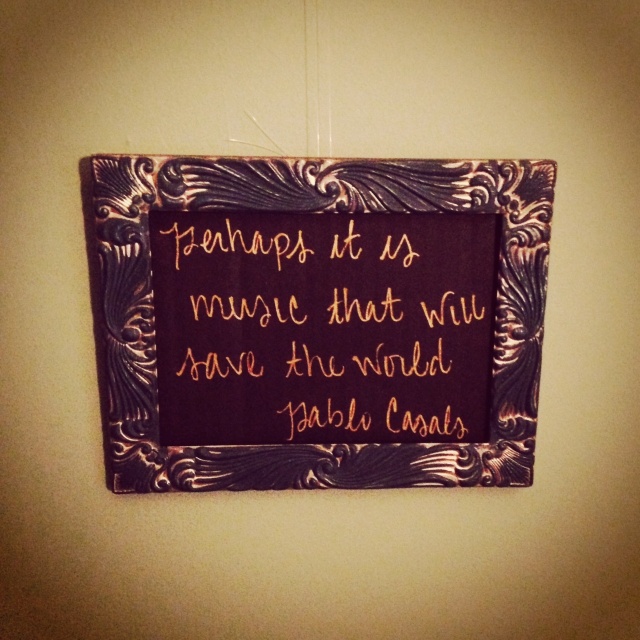Here are a few things I’ve been eyeing for the studio room, which also serves as space for my love’s graphic design projects and a hobby room for our crafti-ness. It’s a bit eclectic but the general color scheme features lots of sea greens with mustard, navy, and woodsy brown accents. Some of these things I actually need (loosely defined, of course), and a few are just for fun. The fun ones won’t be happening any time soon… it takes quite a bit of teaching to warrant purchases specifically for the studio, even more so if they aren’t necessary. But I like to dream and plan for the future, so here I go!

1. Nurtured by Love by Sinichi Suzuki – I had a copy of this when I took my Every Child Can class at the Ottawa Suzuki Institute, but I can’t seem to find it anywhere. Definitely not helpful, I need to revamp my storage and organization so I quit misplacing things. It’s probably time I gave it another read to refresh my insights, and I would like to have a copy to lend to parents so they can really grasp what the Suzuki Method is all about. I know they’d love a light reading assignment.. ha! Suzukiassociation.org, $12
2. Berlioz the Bear by Jan Brett – A curious sound distracts this band of bears as they make their way to town to play for the gala ball. What will happen when their donkey stubbornly decides to take a seat? And when an unexpected guest makes a welcome appearance? Will they make it there in time?? Beautiful, intricate illustrations and an entertaining story line keep children and adults enraptured while introducing members of the chamber orchestra. JanBrett.com, Barnes & Noble, or any fine local bookstore, $15
3. M is for Melody by Kathy-Jo Wargin and Katherine Larson – I have never read this book but am eager to have it around, as any book that teaches important stuff to know in a musical way is a-ok with me. Also Amazon thinks I will like it based on past purchases, which I believe to be an accurate assessment. Bravo for targeted marketing, reading my mind. It introduces instruments, musical terms, styles, and composers. Amazon.com, $7
4. Classical composers poster – Grouped by era, this would be an excellent way to start the introduction to some of the major players at the helm of our great classical tradition. I would like to have this on the wall to reference when students are learning a new song to talk about when they lived, where they lived, and what type of music they wrote. Perhaps I would include notable physical characteristics; even the familiarity of the faces would help make the connection between what they are playing and the person who breathed it into being. Musicmotion.com, $17
5. Wooden table – For parents to set their coffee, keys, whatever. But also a place for me to set up some cute trinkets (see next) and underneath storage for more books – my magazine rack is full! AmishDirectFurniture.com, no price listed but I’m pretty sure I could find something similar at a flea market.
6. Violin playing bronze figurines – These are adorable. And expensive. To be honest I could probably whittle these out of wood (I don’t know how to whittle) faster than I could work enough to pay for these. And by that time I’d like something else better, or have found more useful employment for my hard-earned cash. But they are pretty cute, so I’ll let them stay on the list. Scullyandscully.com, cat and fox, $450.
7. Wooden clock – I need to put a clock on the wall so I can easily peek at it periodically. I haven’t been so good at keeping track of time and tend to give people quite a bit extra during lessons. It isn’t usually a problem and I prefer to finish my train of teaching thought instead of cutting it short, but sometimes it is a bit of problem if mom needs to pick up another kid from ballet, or someone else is waiting their turn. I have some very courteous parents and sometimes they’ll sit in the car. So I’ve gotten in the habit of glancing at my phone towards the end and it just feels rude. The simplest solution would be a clock on the wall. I thought this one was just lovely. BobbyBerkHome.com, $84
8. Paper cutout star lanterns – Every time I’m in the Seattle airport I see rows of these hanging in the window of this really awesome gift shop called Fireworks. They are so bright, colorful, and cheery and I’ve always wanted to pick one up. One problem is selection – there are so many beautiful & intricate designs – and I’m incredibly indecisive about silly, trivial things like what burger to order or what accent color I might like best. But the main problem is that I’m inevitably overloaded with my violin, carry on bag, and all the electronics I’m too scared to put in my suitcase. So I’ve never had an extra hand or space to shove even one. more. box. Fireworks, lantern and hanging light bulb fixture, $35
9. Voluspa small jar candle in crane flower – Aromatic with decadent packaging, there’s a lot to love about this little luxury. If I can overcome the guilt that accompanies such an extravagant standard of living, every now and again it’s fun to treat yo’ self! Anthropologie, $10.




